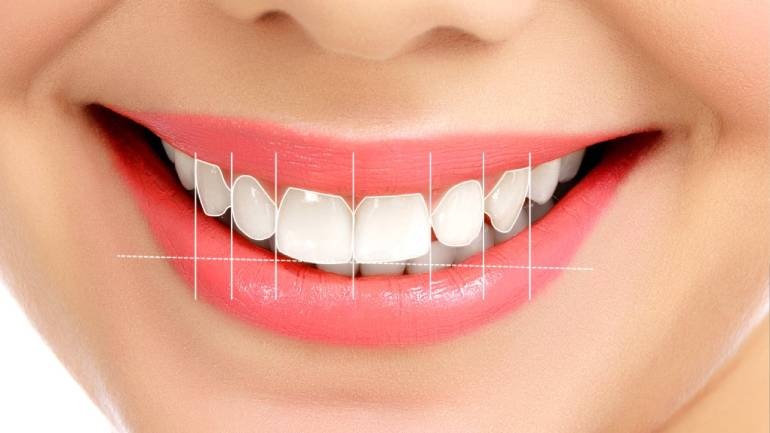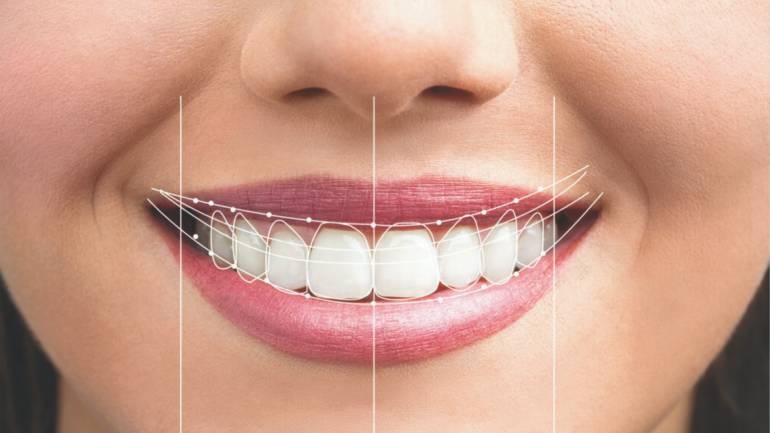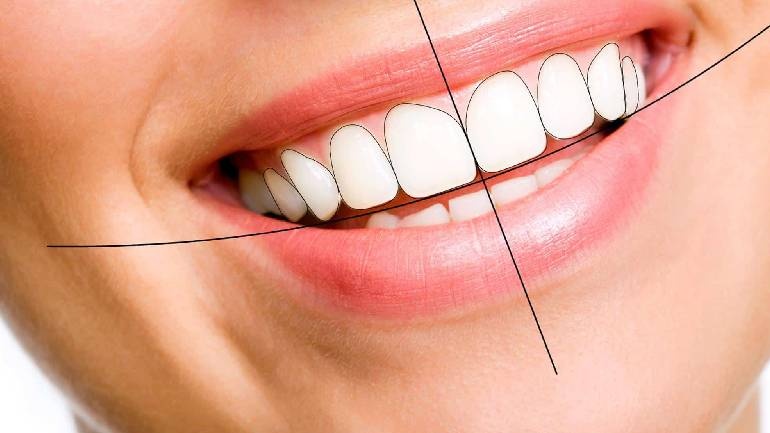
Everyone’s smile is different, and everyone looks beautiful while smiling. Nevertheless, there is a common dental aesthetic for smiles, and smile design is a way to achieve that. Smile design’s main focus is on crafting a personalized and well-balanced smile that complements an individual's face, teeth, lips, and overall appearance. Popular smile designs like Hollywood smile have become very common over the years, and dentists consider their patients' wishes, expectations, and facial features to develop treatment plans that deliver optimal results.
The process of smile design includes factors like tooth colour, shape, gaps between teeth, gum line, and the alignment of lips. It involves using various methods to achieve the desired smile.
WHAT IS SMILE DESIGN?

Smile design is a specialized branch of dentistry that focuses on improving the appearance of a person's smile through different cosmetic procedures. It differs from traditional dentistry in that it considers the unique facial features, personality, and aesthetic goals of each person. Dentists who specialize in smile design have a deep understanding of dental anatomy, facial proportions, and the latest advancements in cosmetic dentistry techniques.
The goal of smile design is to create a smile that is not only visually appealing but also natural-looking and fits well with the rest of the face. This involves addressing dental imperfections such as crooked teeth, gaps, discoloration, misalignment, and any other issues that may affect the overall appearance of the smile that can be treated with dental crowns, braces, clear aligners, and other methods.
THE PROCESS OF SMILE DESIGN

The smile design process is detailed and differs from person to person. Dentists use a variety of techniques and procedures to transform smiles and enhance their patients' confidence.
If you’re looking to get a smile design yourself, the process usually follows like this:
First, your dentist will conduct a thorough examination, considering factors such as your tooth colour, size, shape, and alignment. They will also evaluate your gum line, facial features, and overall oral health. This evaluation helps in identifying any functional issues that need to be addressed beforehand.
Once the evaluation is complete, your dentist will discuss the treatment options with you. This may include teeth whitening, veneers, crowns, orthodontic treatment, or a combination of these procedures. The treatment plan will be customized based on the individual's needs and preferences, and with packages like all on 4 implants and all on 6 implants, the combination of these procedures become easier.
During your treatment, your dentist will work closely with you to ensure the desired outcome is achieved. This may involve multiple appointments and adjustments to achieve optimal results.
TOOLS AND TECHNIQUES USED IN SMILE DESIGN

Digital Imaging/Photoshop: By digitally manipulating images of your teeth, your dentist can show you how different treatments will enhance your smile. This helps you visualize the final outcome before any procedures are performed.
Porcelain Veneers: Veneers are thin shells made of porcelain that are bonded to the front surface of your teeth. They can correct a range of issues like chips, gaps, discoloration, and misalignment. Veneers create a natural-looking, flawless smile that can last for long years with proper care.
Teeth Whitening: Professional teeth whitening treatments can effectively remove stains and discoloration caused by aging, smoking, or certain foods and drinks.
Dental Implants: If you have missing teeth, dental implants are a durable and long-lasting option. These artificial tooth roots are surgically placed into your jawbone to support a replacement tooth or bridge. They look and function like natural teeth, restoring your smile to its full potential.
Orthodontics: Straightening crooked or misaligned teeth is often a crucial part of smile design. Orthodontic treatments, such as traditional braces or clear aligners, can gradually move your teeth into proper alignment, improving both the aesthetics and functionality of your smile.
BENEFITS AND OUTCOMES OF SMILE DESIGN
After undergoing smile design treatment, patients can expect to experience a wide range of benefits and see remarkable outcomes:
Confidence Boost: One of the most significant benefits of smile design is the boost in confidence it provides. A beautiful smile can have a positive impact on an individual's self-esteem, allowing them to feel more comfortable in social and professional environments.
Improved Oral Health: Smile design treatments often involve addressing issues such as misalignment, tooth decay, or gum disease. By correcting these oral health problems, patients will have improved overall oral health and reduce the risk of future dental issues.
Natural-Looking Results: With advancements in dental technology and materials, smile design procedures now provide natural-looking results. Dentists specialised in smile design carefully select the appropriate colour, shape, and size of restorations to ensure they blend seamlessly with the patient's natural teeth.
Longevity: Many smile design treatments are designed to be durable, providing long-lasting results. With proper care and maintenance, patients can expect their beautiful smiles to last for years to come.
Improved Oral Health: Alongside the aesthetic benefits, smile design treatments can also enhance the functionality of the teeth and jaws. Correcting misalignments or bite issues can improve chewing efficiency and reduce discomfort or strain in the jaw joints.
POSSIBLE RISKS OF SMILE DESIGN PROCEDURES
Smile design procedures, like any medical treatment, have potential risks of complications. It's important to be aware of possible complications, such as:
Sensitivity: Your teeth may become more sensitive to hot or cold temperatures. Of course, you shouldn’t drink/eat hot or cold beverages/foods after your treatment anyway. Your sensitivity should subside over time, and if it doesn’t, you should consult with your dentist.
Discomfort: Discomfort is completely normal after smile design treatment and can last up to 3 weeks. However, overtime discomfort also subsides, so beware of any persistent pain, especially if it is accompanied by fever, change in odour and foul taste as it can be an indication of an infection.
Unexpected changes in appearance: After your treatment, your smile should look how you desired it. If after some time you see changes in colour, shape or experience difficulties eating, you should immediately consult with your dentist to determine the cause and treat it.
Before deciding on a smile design, discuss these risks with your dentist, so you can make an informed decision about the procedure.
Published Date: January 4, 2024



